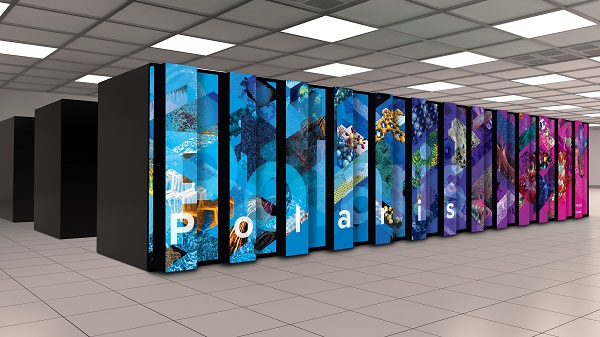
Polaris
NVIDIA and Argonne National Laboratory this morning announced Polaris, a GPU-based supercomputer, with 2,2240 NVIDIA A100 Tensor Core GPUs delivering 1.4 exaflops of theoretical AI performance and about 44 petaflops of peak double-precision performance, up to 4X faster performance than Argonne’s current supercomputers.
Argonne is calling the new system, called “Polaris,” a “testbed” supercomputer to prepare critical workloads for future exascale systems. It will be built by HPE, and hosted and managed by the Argonne Leadership Computing Facility (ALCF). It will enable scientists and developers to test and optimize software codes and applications for AI, engineering, and scientific projects planned for the forthcoming exascale supercomputer, Aurora, a joint collaboration between Argonne, Intel and HPE.
“The era of exascale AI will enable scientific breakthroughs with massive scale to bring incredible benefits for society,” said Ian Buck, vice president and general manager of Accelerated Computing at NVIDIA. “NVIDIA’s GPU-accelerated computing platform provides pioneers like the ALCF breakthrough performance for next-generation supercomputers such as Polaris that let researchers push the boundaries of scientific exploration.”
“Polaris is a powerful platform that will allow our users to enter the era of exascale AI,” said ALCF Director Michael E. Papka. “Harnessing the huge number of NVIDIA A100 GPUs will have an immediate impact on our data-intensive and AI HPC workloads, allowing Polaris to tackle some of the world’s most complex scientific problems.”
The system will accelerate transformative scientific exploration, such as advancing cancer treatments, exploring clean energy and propelling particle collision research to discover new approaches to physics. And it will transport the ALCF into the era of exascale AI by enabling researchers to update their scientific workloads for Aurora, Argonne’s forthcoming exascale system.
Polaris will also be available to researchers from academia, government agencies and industry through the ALCF’s peer-reviewed allocation and application programs. These programs provide the scientific community with access to the nation’s fastest supercomputers to address “grand challenges” in science and engineering.




Guessing a 2MW power envelope?